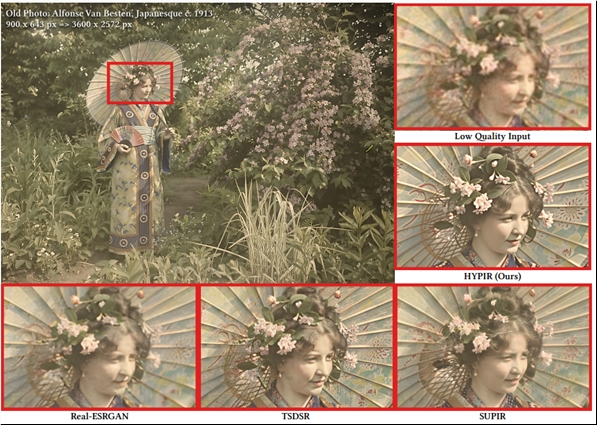Recently, the Shenzhen Institute of Advanced Technology, Chinese Academy of Sciences, announced an impressive innovative technology - the HYPIR Image Restoration Large Model. The magic of this model lies in its ability to restore an old photo to 8K ultra-high definition quality in just 1.7 seconds. This technology will bring revolutionary changes to multiple fields such as cultural heritage preservation, film restoration, and scientific research in medical fields.
The HYPIR model has been upgraded through multiple iterations, and its technical capabilities are significantly improved compared to traditional image processing software. In the past, when using image processing software, we often needed to process each detail individually, which was time-consuming and laborious. However, HYPIR, with its intelligent algorithms and rich data learning capabilities, can quickly and accurately restore images, presenting stunning 4K and 8K quality.

Besides, HYPIR also performs excellently in preserving text. Traditional diffusion models often cause restored text to be blurry or distorted, while HYPIR can accurately restore text content with high fidelity, ensuring that the text in the image is clear and readable. This means that whether it's a simple sign or a complex document, HYPIR can precisely reproduce its original form, completely solving the shortcomings of traditional technologies in text restoration.

The emergence of HYPIR is not only a leap in image processing technology but also a significant contribution to the protection of cultural heritage. Whether it is restoring historical photos, improving film quality, or processing image data in scientific research, HYPIR can play an important role. Its release marks the beginning of a new era in image restoration technology, and future image processing will be more efficient and precise.
The launch of the HYPIR large model not only demonstrates China's innovation capability in the field of artificial intelligence, but also brings new hope for us in image processing and cultural protection.
